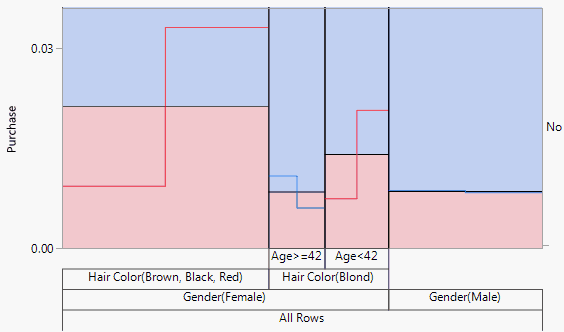The Hair Care Product.jmp sample data table results from a marketing campaign designed to increase purchases of a hair coloring product targeting both genders. For purposes of designing the study and tracking purchases, 126,184 “club card” members of a major beauty supply chain were identified. Approximately half of these members were randomly selected and sent a promotional offer for the product. Purchases of the product over a subsequent three-month period by all club card members were tracked.
The data table shows a Promotion column, indicating whether the member received promotional material. The column Purchase indicates whether the member purchased the product over the test period. For each member, the following information was assembled: Gender, Age, Hair Color (natural), U.S. Region, and Residence (whether the member is located in an urban area). Also shown is a Validation column consisting of about 33% of the subjects.
For a categorical response, the Uplift platform interprets the first level in its value ordering as the response of interest. This is why the column Purchase has the Value Ordering column property. This property ensures that “Yes” responses are first in the ordering.
|
1.
|
|
2.
|
Select Analyze > Consumer Research > Uplift.
|
|
–
|
|
–
|
|
–
|
|
–
|
|
4.
|
Click OK.
|
Based on the validation set, the optimal Number of Splits is determined to be three. The Graph is shown in Graph after Three Splits. Note that the vertical scale has been modified in order to show the detail.
The graph indicates that uplift in purchases occurs for females with black, red, or brown hair and for younger females (Age < 42) with blond hair. For older blond-haired women (Age ≥ 42) and males, the promotion has a negative effect.
 Example of the Uplift Platform
Example of the Uplift Platform